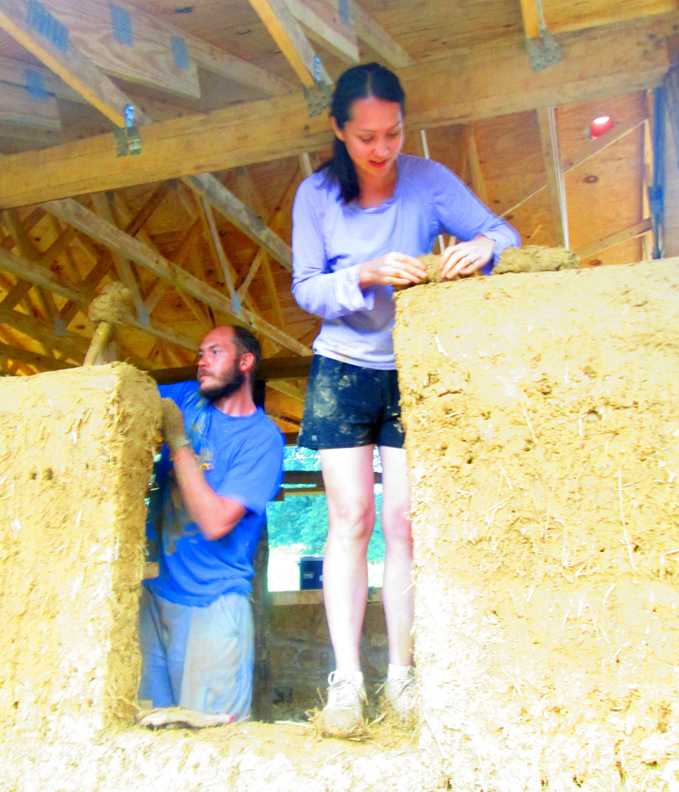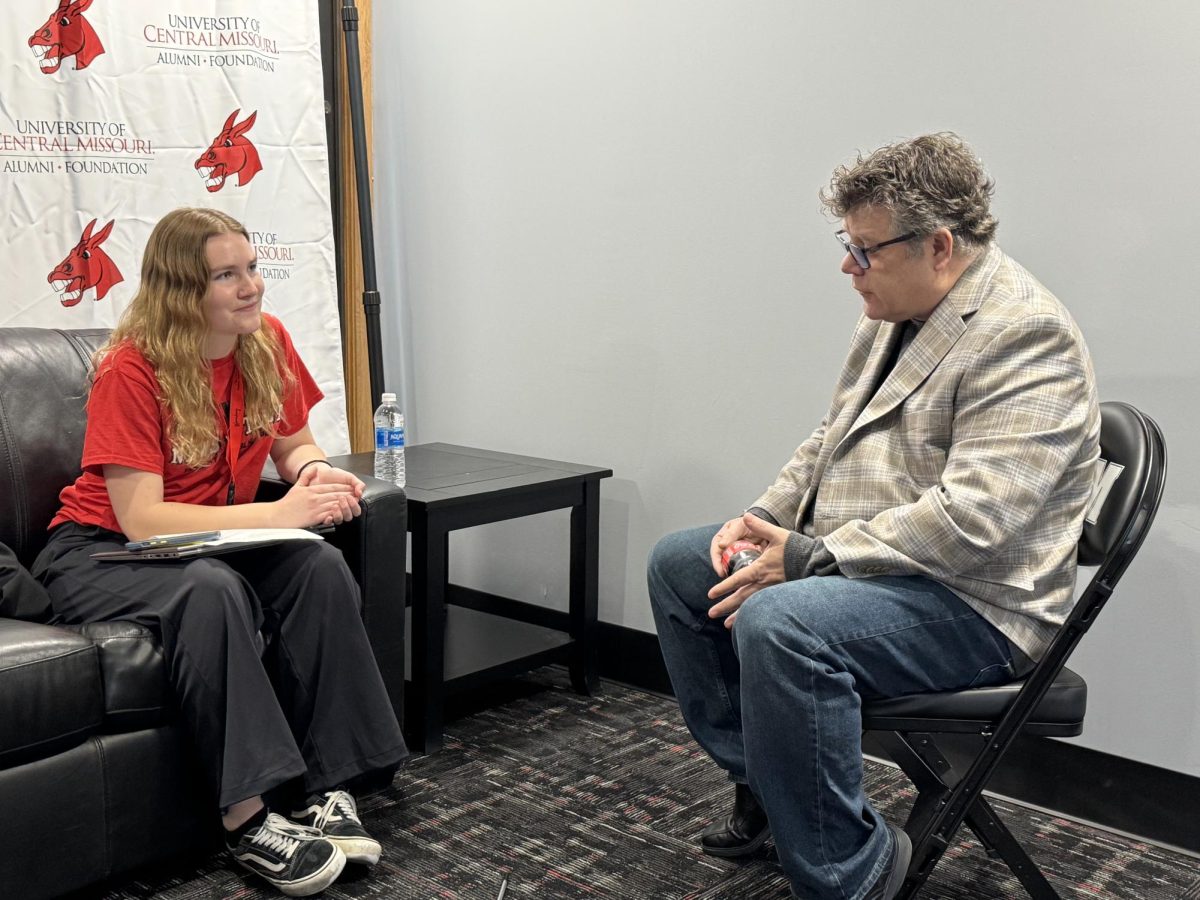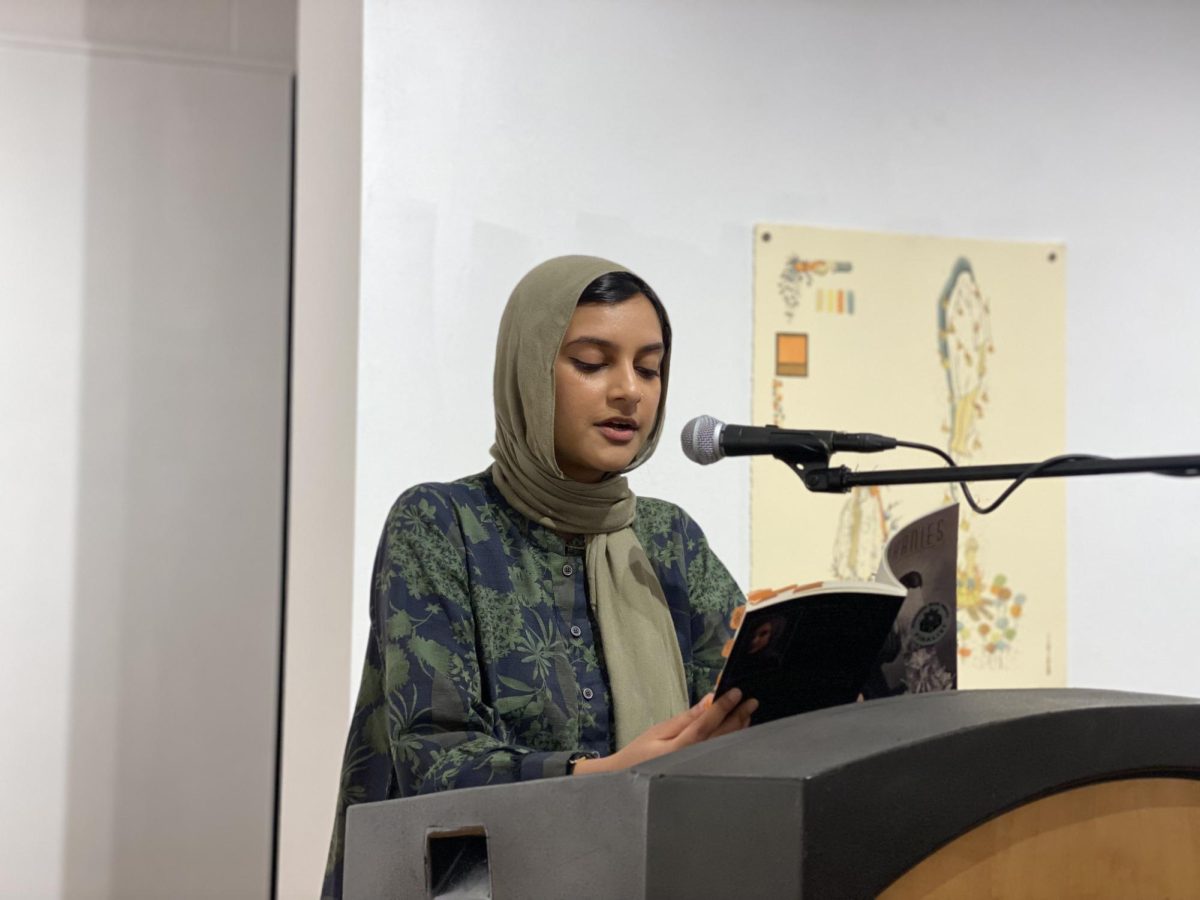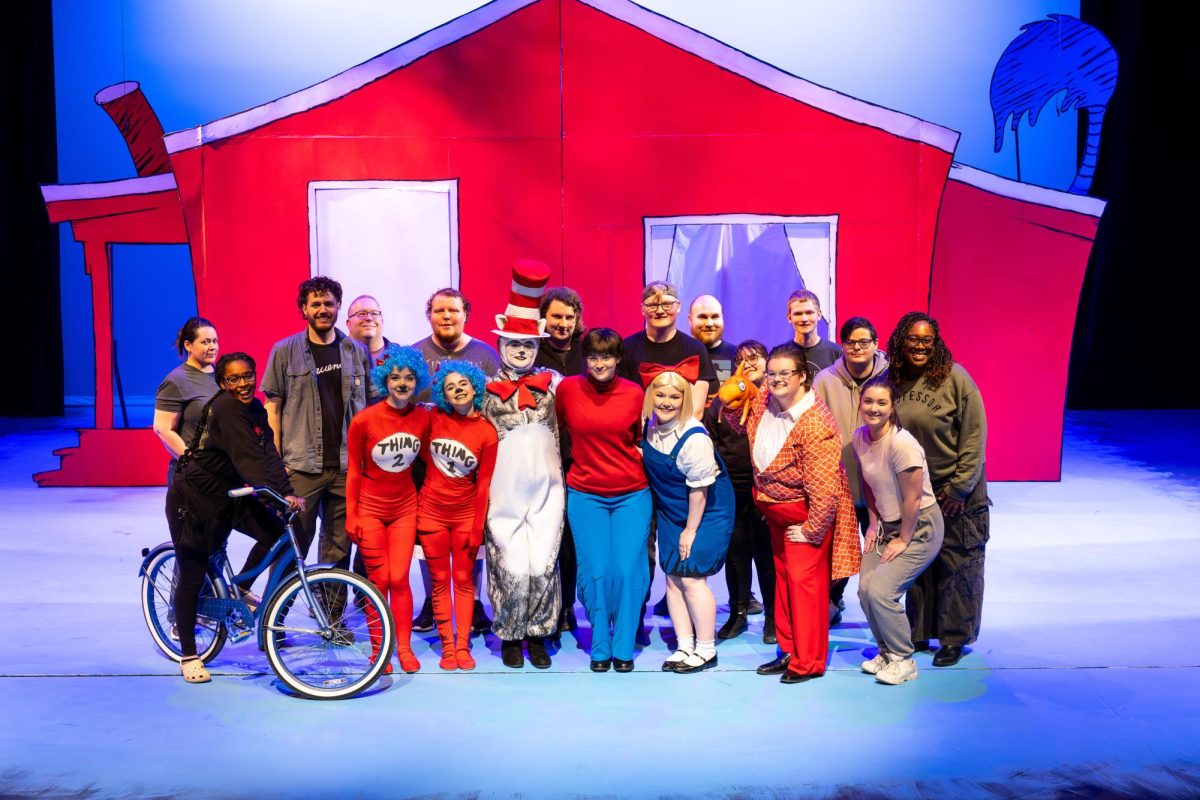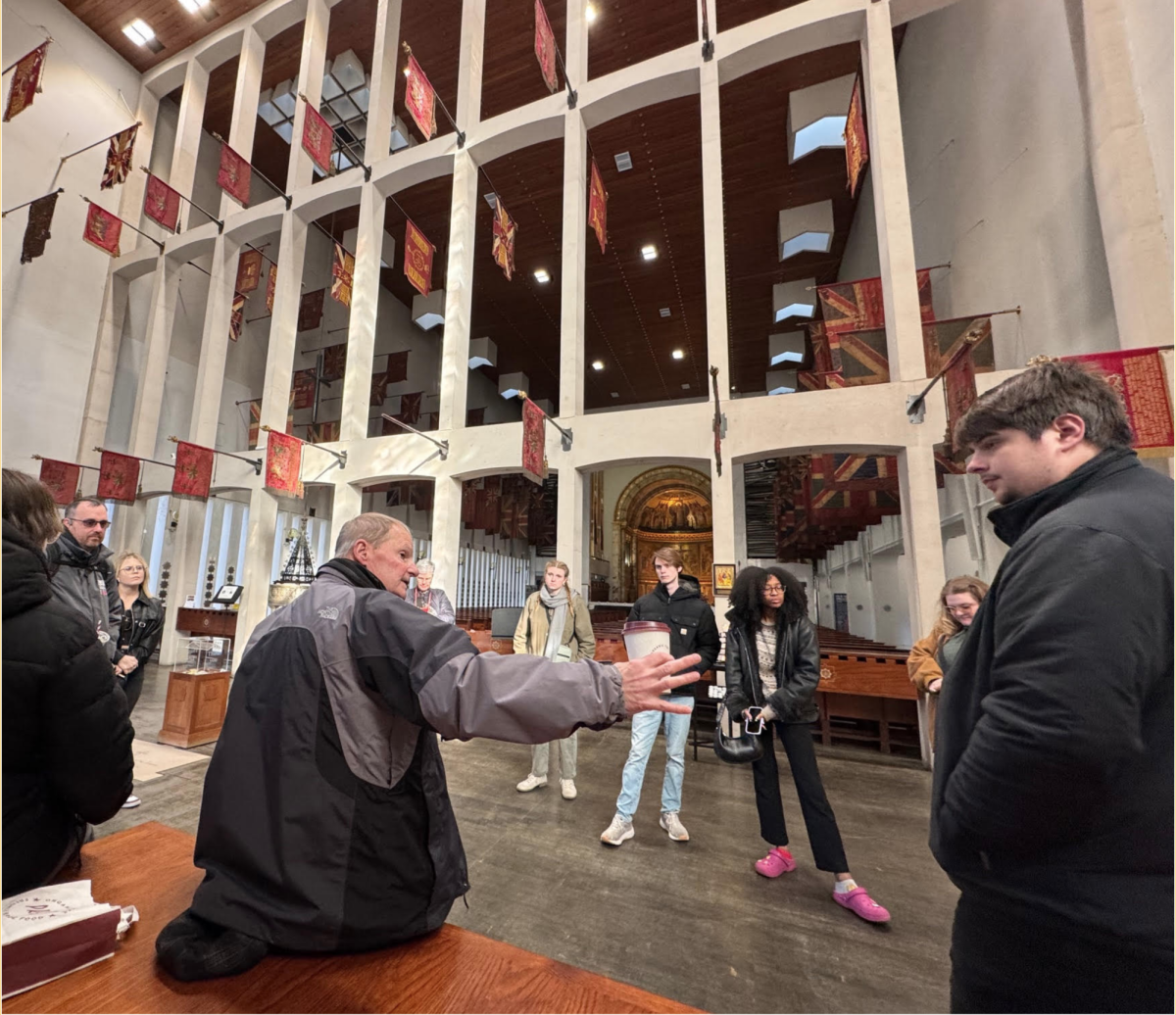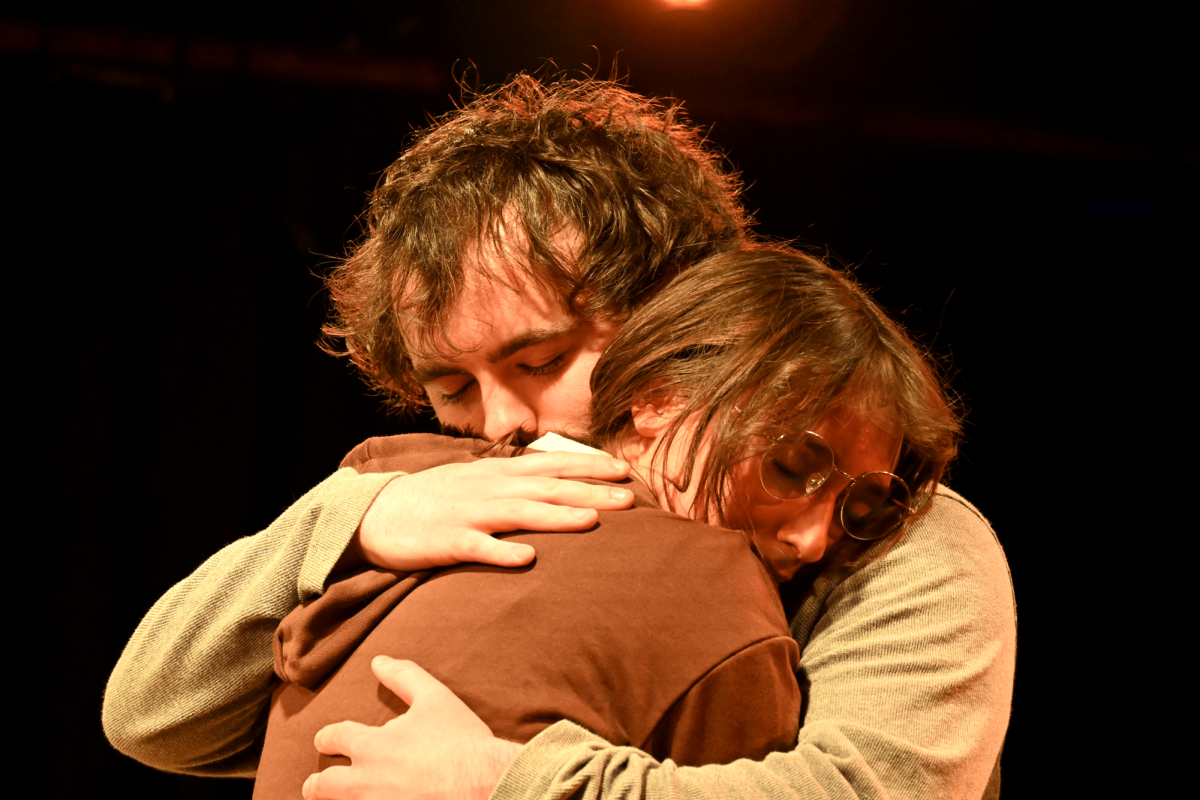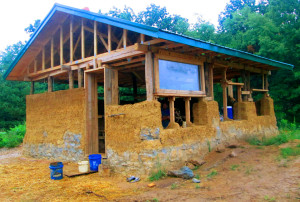
By KELSEY HARMON
(JOHNSON COUNTY, Mo., digitalBURG) – Driving down Y Highway south of Warrensburg, it is typical to see farmhouses and plots of cropland.
A light, clay-colored house with a green tin roof seems unique to this area, even more so upon further inspection. With no siding or stucco, this house utilizes a more natural approach to construction.
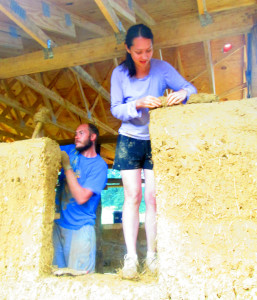
Mike and Andrea Reinhardt, a married couple of nearly 11 years, are building a “cob house” – an energy efficient method using a mixture of clay, sand, straw, water and other earthly elements such as stone and wood.
Cob is a method of working with multiple layers of natural elements to complete one structure – in this case a home. Cob structures have a simple feel to them, yet require daily physical work to complete.
“The walls of the house ideally need to be completed before the weather gets cold enough to freeze,” Andrea said. “Otherwise, it (will) compromise the integrity of the walls.”
Cob structures are able to hold large amounts of heat within the walls. The thicker the walls, the more heat they can store. Although this method is time consuming, it is easy to learn and can be a good group activity for friends, family and a way of meeting new people.
Mike Reinhardt is taking a more academic approach to the project. He read up on the process and attended a three-day cob housing workshop with Disputanta Cob in Berea, Ky.
Mike said the 400-square-foot cozy house does not require a loan or mortgage and should provide the Reinhardt family with long-term durability.
Andrea explained that due to the earthen mass, they expect the house to hold up better than a conventional house against tornadoes and heavy winds. The roof and footing of a cob house are critical.
“If they are kept from being saturated, a cob house is extremely durable,” Andrea said.
The Reinhardt’s house will be made of all “repurposed” building materials they obtained either by overstock or salvaged from the area. Mike explained that the roof was built by Amish locals.
The clay being used is found on the property, and the Reinhardts said they plan to use solar power to run the air conditioning and lighting within the house. They will also have a conventional gas stove, electric refrigerator and a tankless water heater.
They will furnish the home naturally with cob seating and furniture made of wood from their land.
Construction on the house began late September 2012. Although the Reinhardt’s are not sure when the house will be completed, they hope it will be finished enough to move into by the end of the fall.
The Reinhardts said a main reason they wanted to build the house was to start a family and provide their children with a healthy living environment.
Besides being inexpensive at roughly $15,000 when finished, Andrea said they also wanted a home free from toxicity. She said many of the products and food items purchased commercially contain hazardous chemicals and unhealthy additives.
“Make it or know who made it,” Andrea said.
The Reinhardts hold themselves responsible for who is making the materials they purchase and at what cost. They said since they know the source of all the materials they are using, they are not funding things they do not morally agree with, such as child labor.
They both have master’s degrees in biblical studies, which they believe have shaped their outlook on consumerism and lifestyle. They believe in a more natural lifestyle, and their beliefs affected the way they think and choose to live.
To illustrate their philosophy, Mike related it to the importance of voting.
“Vote every day with the money you spend and how you spend it,” he said.
The Reinhardts are still working toward their goal of subsistence living. In addition to their building project, the Reinhardts and their business partner, Nate Watson, are searching for a location to begin Wilderness Brewing Co.
The “nano-brewery,” or company where beer is brewed in 60 gallon amounts, will primarily sell beer on location by pints or growler fills. They also may distribute kegs to select places and do a minimal amount of bottling.
Nate and Mike brew many different styles of beer. The tagline of Wilderness Brewing is “Always Wandering” because the business partners are always exploring and brewing new and interesting beers.
They have purchased equipment for the company using Kickstarter – a crowdsourcing Web site that funds private projects through public donations. They plan to grow the hops on their land.
The couple is open to sharing their project with people who are interested in the cob method. To contact the Reinhardts, send an e-mail to the.[email protected].
Categories:
Building a home the natural way
Written by Muleskinner Staff
August 8, 2013
(Photo by Kelsey Harmon) Mike and Andrea Reinhardt work on the walls of their house. They hope to be able to move in by the end of fall.
0

